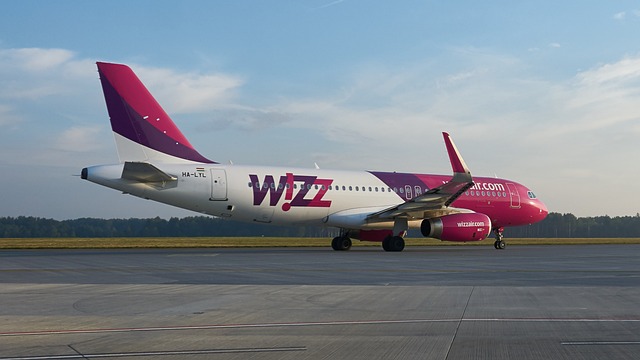Flight Training Guide: Chart Your Path to a Pilot Career
Aviation training opens the door to an exciting career in the sky. This comprehensive guide explains the steps from private pilot training to airline certifications, typical timelines, prerequisites, career paths, costs, and financing options. Learn how to plan your flight training journey and what to expect at each stage—perfect for aspiring pilots researching flight school, pilot licenses, and aviation careers.

A passion for flying begins with training—and a clear roadmap can make that dream achievable. Whether you want to fly for personal enjoyment, instruct new pilots, or work for an airline, structured education, flight hours, and the right certifications are essential. This guide breaks down the typical progression, requirements, career choices, costs, and funding options to help prospective pilots make informed decisions.
Starting point: Private Pilot License (PPL)
Most pilots begin by earning a Private Pilot License (PPL). The PPL authorizes you to fly single‑pilot, noncommercial flights and forms the foundation for advanced ratings. Training combines ground school (airlaw, navigation, meteorology, aircraft systems) with hands‑on flight instruction. With focused study and regular flying, many students complete their PPL within roughly three to six months, though schedules and weather can extend that timeline.
Typical timeline for pilot training
How long training takes depends on the license level, how often you fly, and whether you train full‑time or part‑time. Common timelines are: - Private Pilot License: about 3–6 months for most dedicated students. - Instrument Rating and Commercial Certificate: pursuing these next steps and accumulating necessary flight time can extend training to 18 months or longer. - Airline Transport Pilot (ATP): reaching the hours and experience for an ATP—often required to serve as an airline captain—can take three years or more, depending on whether you build time through instructing, banner towing, or other flying jobs. Frequent, consistent flying accelerates progress; gaps between lessons typically lengthen the overall training period.
Prerequisites and entry requirements
Requirements vary by country and authority, but common prerequisites include: - Minimum age: many jurisdictions require you to be at least 17 for a PPL and 18 for a commercial license. - Medical certificate: a flight medical (Class 1, 2, or equivalent) ensures you meet physical and mental fitness standards for flying. - Language skills: competence in the aviation language used locally—often English—is essential for clear radio communication. - Education and background: a high school diploma is usually sufficient; some advanced programs or airlines may prefer a college degree. A clean criminal record is typically required for licensure.
Career paths after training
Aviation training prepares you for a wide array of roles, including: - Commercial airline pilot: transporting passengers or cargo for regional or major carriers. - Corporate pilot: flying business jets and managing charter operations for private firms. - Flight instructor: teaching student pilots while collecting flight hours and experience. - Military pilot: serving in armed forces with specialized training and operational flying. - Search and rescue or emergency services pilot: undertaking time‑sensitive missions to save lives. - Agricultural and aerial application pilot: performing crop dusting or precision agricultural tasks. - Test pilot: evaluating aircraft performance and flying prototypes or modified aircraft for manufacturers. Each path has different experience requirements, schedules, and lifestyle considerations—researching roles early helps tailor your training choices.
Training costs and what to expect
Costs vary widely by region, aircraft type, and flight school. Below is a general estimate for training in the United States that can serve as a planning reference.
| License/Rating | Estimated Cost Range | Notes |
|---|---|---|
| Private Pilot License (PPL) | $10,000 - $15,000 | Includes required flight hours, ground school, and materials |
| Instrument Rating | $8,000 - $12,000 | Trains you to fly safely in low‑visibility conditions |
| Commercial Pilot License | $25,000 - $50,000 | Additional flight time and advanced maneuvers required |
| Airline Transport Pilot License (ATP) | $50,000 - $80,000 | Highest pilot certification, requires significant flight hours |
Prices are estimates and may change; conduct independent research before making financial decisions.
Saving and financing your training
Because flight training can be expensive, many students explore multiple ways to manage costs: - Flight school financing: some schools provide payment plans or work with lenders that specialize in aviation loans. - Federal or institutional aid: accredited aviation programs at colleges may qualify for federal student loans or grants. - Scholarships and grants: organizations such as AOPA, EAA, and various aviation foundations offer scholarships for aspiring pilots. - Military training: joining the armed forces is another route to earn pilot experience, though it includes service commitments. - Work‑study and instructor routes: working for a flight school or becoming a Certified Flight Instructor (CFI) allows you to earn while building flight hours. Combining funding sources—scholarships, loans, part‑time work, and phased training—can make the process more affordable.
Planning your path and final tips
Becoming a pilot takes dedication, time, and money, but the rewards are substantial for those who love flying. To set yourself up for success: - Research multiple flight schools and aircraft fleets; training environment and instructor quality matter. - Set a realistic timeline and budget, allowing for weather delays and additional training hours. - Consider the career route early—if you aim for an airline, plan how you’ll build the required hours (instructing, charter flying, or other operations). - Maintain your medical standards and language proficiency throughout training.
With careful planning, persistence, and the right resources, you can progress from your first solo flight to advanced certifications and a rewarding career in aviation. Keep learning, network with other pilots, and make informed choices to keep your ambitions airborne.






